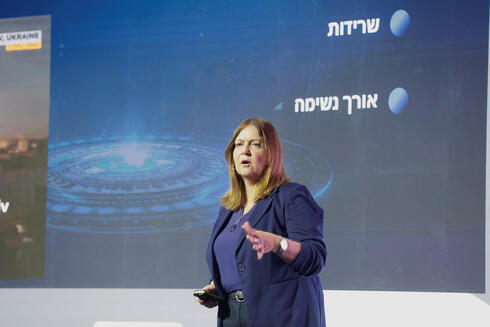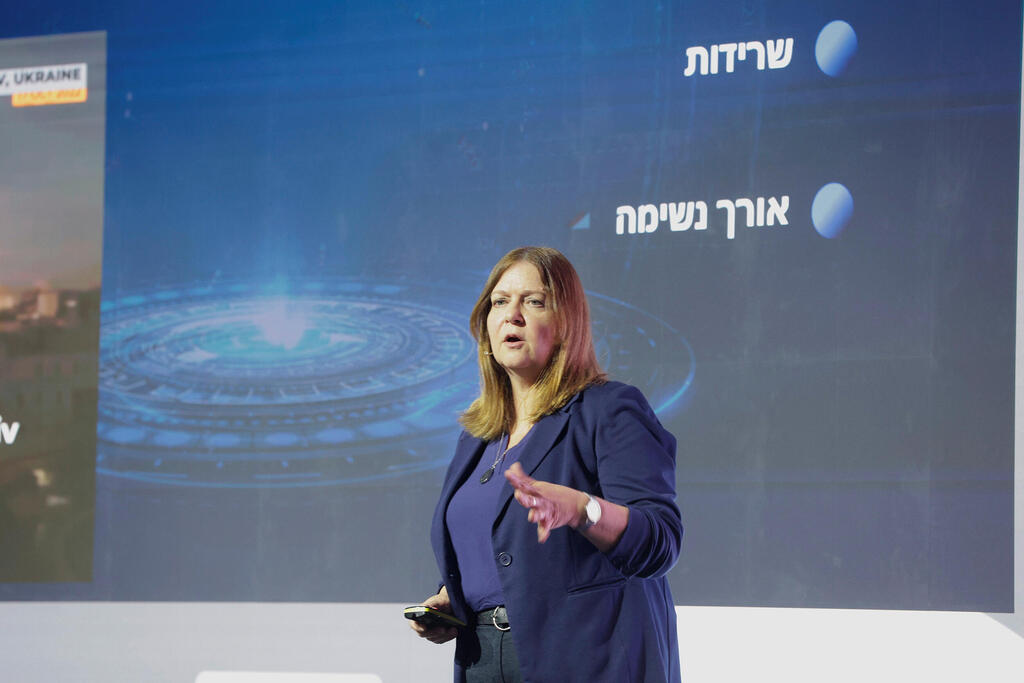
Rafael integrating high power microwave and laser systems to battle drone swarms
Dr. Judith Hocherman-Frommer discussed Rafael's next-gen defense technologies at the Growth Conference
"Technological innovation is a significant engine of growth, and Rafael's vision is pertinent to national security and operational frontline needs," said Dr. Judith Hocherman-Frommer, EVP of R&D at Rafael, at the Calcalist and Mizrahi Tefahot Growth Conference. According to Hocherman-Frommer, "We focus on air defense, the digital space, and other areas."
"At Rafael, there are approximately 90 knowledge centers ranging from material levels to complex systems, with 27 centers designated by the Ministry of Defense as national infrastructure centers. We have received 61 Israel Defense Awards, including two in recent years, and we conduct extensive research and development. The Iron Dome and Trophy APS have been defined among the 12 significant security systems of the decade. The Iron Dome enables the stability of civilian life in Israel today, while the Trophy APS facilitates maneuvering in challenging conditions. The question now is how to cultivate these systems to deliver value in the next decade."
Hocherman-Frommer highlighted, "The challenge of research and development stems from operational needs: establishing a technological foundation and a value proposition that aligns with operational requirements. It involves keeping pace with emerging technologies and assessing deficiencies in the technological base, identifying areas for improvement, and adapting to changing operational needs and trends. Looking at the past years, particularly the breakthroughs in artificial intelligence and the conflict in Ukraine and subsequent local implications, lessons have been learned. There's a paradigm shift; UAVs operating near the ground challenge air superiority. Longevity and the volume of armaments will dictate survival."
Referring to Iron Swords, Hocherman-Frommer added, "We face challenges such as underground threats, protection against UAVs, and anti-tank capabilities. These lessons reflect evolving threats, necessitating adaptive responses and ensuring technological superiority remains paramount. I observe technological advancements across four domains: computing revolutions, AI-driven innovations, aviation principle-based weapon effectiveness, connectivity and cyber advancements, energy solutions, nano-satellites, and advanced materials."
Hocherman-Frommer emphasized, "Connectivity and networking form the foundational principles—ensuring accessible information across users without infrastructure constraints. Autonomous tools are increasingly vital, enabling tasks autonomously executed, as exemplified during recent events. Nano-satellites ensure continuous monitoring of space. Protecting space assets and efficient energy generation, storage, and harvesting are critical. Energy weapons, including lasers and HPMs, neutralize drone swarms by erecting virtual energy barriers."
"In addition, advanced manufacturing technologies revolutionize mechanics—conductors and battery printing, alongside AI advancements, reshape engineering practices. Recent years have witnessed engineering methodology revolutions, enhancing development efficiency. Explainable AI is pivotal, driving technological innovation in security, fostering synergies with companies and academia," Hocherman-Frommer concluded.














